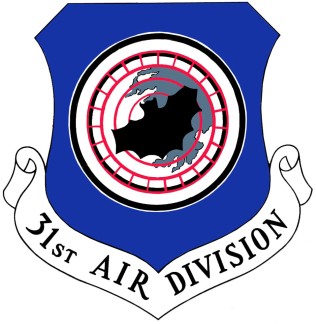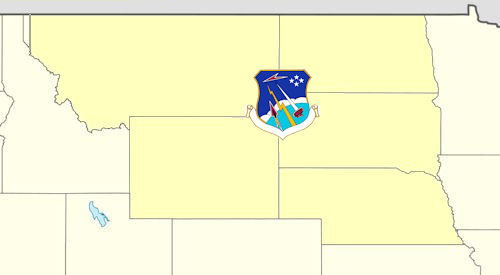|
916th Aircraft Control And Warning Squadron
The 916th Aircraft Control and Warning Squadron is an inactive United States Air Force unit. It was last assigned to the Grand Forks Air Defense Sector, Air Defense Command, stationed at Beausejour Air Station, Manitoba, Canada. It was inactivated on 1 April 1963. The unit was a General Surveillance Radar squadron providing for the air defense of North America. Lineage * Constituted as the 916th Aircraft Control and Warning Squadron : Activated on 12 February 1952 : Discontinued and inactivated on 1 October 1961 Assignments * 32d Air Division, 12 February 1952 * 31st Air Division, 1 December 1952 * 29th Air Division, 1 January 1959 * Grand Forks Air Defense Sector, 1 April 1959 – 1 October 1961 Stations * Grenier AFB, New Hampshire, 12 February 1952 * Beausejour AS, Manitoba, 1 December 1952 – 1 October 1961 References * Cornett, Lloyd H. and Johnson, Mildred W., ''A Handbook of Aerospace Defense Organization 1946 - 1980''Office of History, Aerospace Defense Center, Pete ... [...More Info...] [...Related Items...] OR: [Wikipedia] [Google] [Baidu] |
United States Air Force
The United States Air Force (USAF) is the air service branch of the United States Armed Forces, and is one of the eight uniformed services of the United States. Originally created on 1 August 1907, as a part of the United States Army Signal Corps, the USAF was established as a separate branch of the United States Armed Forces in 1947 with the enactment of the National Security Act of 1947. It is the second youngest branch of the United States Armed Forces and the fourth in order of precedence. The United States Air Force articulates its core missions as air supremacy, global integrated intelligence, surveillance and reconnaissance, rapid global mobility, global strike, and command and control. The United States Air Force is a military service branch organized within the Department of the Air Force, one of the three military departments of the Department of Defense. The Air Force through the Department of the Air Force is headed by the civilian Secretary of the Air Force ... [...More Info...] [...Related Items...] OR: [Wikipedia] [Google] [Baidu] |
Grand Forks Air Defense Sector
The Grand Forks Air Defense Sector (GFADS) is an inactive United States Air Force organization. Its last assignment was with the Air Defense Command 29th Air Division, being stationed at Grand Forks Air Force Base, North Dakota. It was inactivated on 1 December 1963 History Established in December 1957 assuming control of former ADC Central Air Defense Force units with a mission to provide air defense of most of North Dakota along with western Minnesota and northern South Dakota. The organization provided command and control over several aircraft and radar squadrons. On 15 November 1959, the new Semi Automatic Ground Environment (SAGE) Direction Center (DC-11) became operational. DC-11 was equipped with dual AN/FSQ-7 Computers. The day-to-day operations of the command was to train and maintain tactical flying units flying jet interceptor aircraft (F-94 Starfire; F-102 Delta Dagger; F-106 Delta Dart) in a state of readiness with training missions and series of exerci ... [...More Info...] [...Related Items...] OR: [Wikipedia] [Google] [Baidu] |
Air Defense Command
Aerospace Defense Command was a major command (military formation), command of the United States Air Force, responsible for continental air defense. It was activated in 1968 and disbanded in 1980. Its predecessor, Air Defense Command, was established in 1946, briefly inactivated in 1950, reactivated in 1951, and then redesignated ''Aerospace'' rather than ''Air'' in 1968. Its mission was to provide air defense of the Continental United States (CONUS). It directly controlled all active measures, and was tasked to coordinate all passive means of air defense. Air defense during World War II Continental United States air defense forces during World War II were initially under the command of the four air districts – Northeast Air District, Northwest Air District, Southeast Air District, and Southwest Air District. The air districts were established on 16 January 1941, before the Pearl Harbor attack. The four air districts also handled USAAF combat training with the Army Ground F ... [...More Info...] [...Related Items...] OR: [Wikipedia] [Google] [Baidu] |
Beausejour Air Station
Canadian Forces Station Beausejour (ADC ID: C-17) is a closed General Surveillance Radar station. It is located east-northeast of Winnipeg, Manitoba. It was closed in 1986. It was operated as part of the Pinetree Line network controlled by NORAD. History As a result of the Cold War and with the expansion of a North American continental air defence system, The site at Beausejour was selected as a site for a United States Air Force (USAF) radar station, one of the many that would make up the Pinetree Line of Ground-Control Intercept (GCI) radar sites. Construction on the base began in 1952 and was completed late that year. The base was manned by members of the USAF's Air Defense Command (ADC) 916th Aircraft Control and Warning Squadron, being known as Beausejour Air Station. In December 1952, operations began at the unit's permanent home. The station was equipped with AN/FPS-3C, AN/FPS-502, AN/FPS-20A; AN/TPS-502, AN/FPS-6B and AN/FPS-507 radars. As a GCI base, the 915th ... [...More Info...] [...Related Items...] OR: [Wikipedia] [Google] [Baidu] |
32d Air Division
The 32d Air Division (32d AD) is an inactive United States Air Force organization. It was last active with Air Defense Command, assigned to First Air Force at Gunter Air Force Base, Alabama, where it was inactivated on 31 December 1969. The division was first activated by Continental Air Command in November 1949 at Stewart Air Force Base, New York. It controlled air defense units in the northeastern United States from Stewart, and later from Hancock Field, New York until being inactivated in August 1958. The division was activated again in November 1958 at Dobbins Air Force Base, Georgia to provide air defense of the southeastern United States, moving to Oklahoma City Air Force Station, Oklahoma in 1961. During the Cuban Missile Crisis, it was the primary air defense command for potential attacks from Cuba, acting through its Montgomery Air Defense Sector and a provisional organization at Key West Naval Air Station. The division was inactivated in September 1963. In April ... [...More Info...] [...Related Items...] OR: [Wikipedia] [Google] [Baidu] |
31st Air Division
The 31st Air Division (31st AD) is an inactive United States Air Force organization. Its last assignment was with Air Defense Command, assigned to Tenth Air Force, being stationed at Sioux City Municipal Airport, Iowa. It was inactivated on 31 December 1969. History Assigned to Air Defense Command (ADC) for most of its existence, the division equipped, administered, trained, and provided combat ready forces within an area covering North Dakota, South Dakota, Nebraska, Minnesota, and other parts of the Midwest. The division participated in numerous live and simulated exercises such as Creek Chief, Pawnee Knife, and Mandan Hunt. Later, beginning in 1966, the 31st assumed responsibility for the former Oklahoma City Air Defense Sector and covered an area including Texas, Oklahoma, Arkansas, and Louisiana. Assumed additional designation of 31st NORAD Region after activation of the NORAD Combat Operations Center at the Cheyenne Mountain Complex, Colorado and reporting was transfer ... [...More Info...] [...Related Items...] OR: [Wikipedia] [Google] [Baidu] |
29th Air Division
The 29th Air Division (29th AD) is an inactive United States Air Force organization. Its last assignment was with Air Defense Command, being stationed at Duluth International Airport, Minnesota. It was inactivated on 15 November 1969. History Assigned to Air Defense Command (ADC) for most of its existence, the division's mission was the air defense of Montana, Idaho, Wyoming, and parts of Nevada, Utah, and Colorado. By 1953, the area changed to include North Dakota, South Dakota, and Nebraska. The 29th supervised the training of its units, and participated in numerous training exercises. The division moved from Richards-Gebaur Air Force Base, Missouri, to Duluth International Airport, Minnesota, on 1 April 1966 as part of an ADC reorganization, the division's area changed to include Minnesota, parts of Wisconsin, and North Dakota, and later expanded to cover most of Iowa. Assumed additional designation of 29th NORAD Region after activation of the NORAD Combat Operations Cente ... [...More Info...] [...Related Items...] OR: [Wikipedia] [Google] [Baidu] |
Grenier AFB
Grenier is a surname. It is a French word for ''attic, loft,'' or ''granary''. Notable people with the surname include: * Adrian Grenier * Angèle Grenier, Canadian maple syrup producer * Auguste Jean François Grenier (1814–1890), French doctor and entomologist * Clément Grenier * Eustace Grenier * Hugo Grenier, French tennis player * Jacques de Grenier (1736–1803), French Navy officer * Jean Charles Marie Grenier (1808–1875), French botanist and naturalist * John Grenier * Louis Grenier, fictional character * Martin Grenier * Philippe Grenier * Richard Grenier (other) * Robert Grenier (CIA), CIA officer * Robert Grenier (poet) * Roger Grenier * Suzanne Blais-Grenier * Sylvain Grenier * Walter I Grenier, Lord of Caesarea * Zach Grenier {{surname, Grenier ... [...More Info...] [...Related Items...] OR: [Wikipedia] [Google] [Baidu] |
Radar Squadrons Of The United States Air Force
Radar is a detection system that uses radio waves to determine the distance (''ranging''), angle, and radial velocity of objects relative to the site. It can be used to detect aircraft, ships, spacecraft, guided missiles, motor vehicles, weather formations, and terrain. A radar system consists of a transmitter producing electromagnetic waves in the radio or microwaves domain, a transmitting antenna, a receiving antenna (often the same antenna is used for transmitting and receiving) and a receiver and processor to determine properties of the objects. Radio waves (pulsed or continuous) from the transmitter reflect off the objects and return to the receiver, giving information about the objects' locations and speeds. Radar was developed secretly for military use by several countries in the period before and during World War II. A key development was the cavity magnetron in the United Kingdom, which allowed the creation of relatively small systems with sub-meter resolution. The ... [...More Info...] [...Related Items...] OR: [Wikipedia] [Google] [Baidu] |



